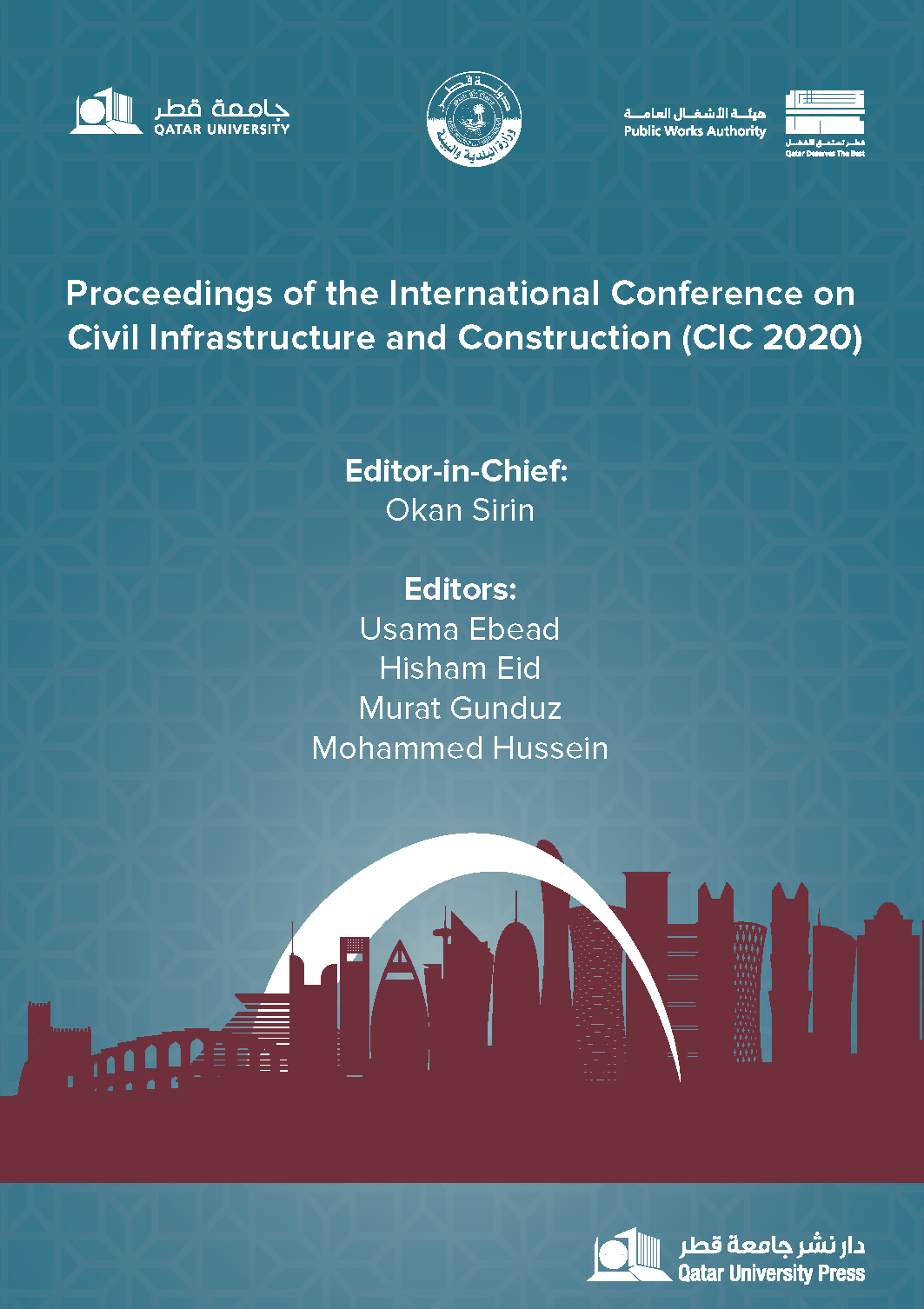Optimum Dispersion Parameters of Carbon Nanotubes: Concrete Strength by Response Surface Methodologies
Abstract
This paper implements Response Surface Methodologies (RSM) techniques to illustrate the maximum carbon nanotubes (CNTs)-concrete mechanical properties responses to the length, weight fraction and treatment variables. Mixes with different CNTs’ content were prepared and tested for flexure, compression and tension. RSM analysis showed that the highest effect on the strengths was due to the CNTs’ content variable. The analysis showed that a weight fraction of 0.3 wt.% of non-treated CNTs is required to achieve the maximum flexural, compressive and tensile strengths in a batch as per the predicted model. RSM analysis also showed that maximum flexural strength will be obtained by using 0.2 wt. % non-treated long CNTs, 0.25 wt. % non-treated short CNTs and 0.03 wt. % treated long CNTs, respectively.
##plugins.themes.bootstrap3.article.details##
Keywords
Carbon nanotubesCNTs' dispersionConcrete strengthResponse surface Methodologies
References
How to Cite
Mohsen, M., Al Ansari, M., Taha, R., Senouci, A., & AbuTaqa, A. (2020). Optimum Dispersion Parameters of Carbon Nanotubes: Concrete Strength by Response Surface Methodologies. Proceedings of the International Conference on Civil Infrastructure and Construction (CIC), 2020(1), 298–307. https://doi.org/10.29117/cic.2020.0038
Issue
Section
Theme 2: Materials and Transportation Engineering


